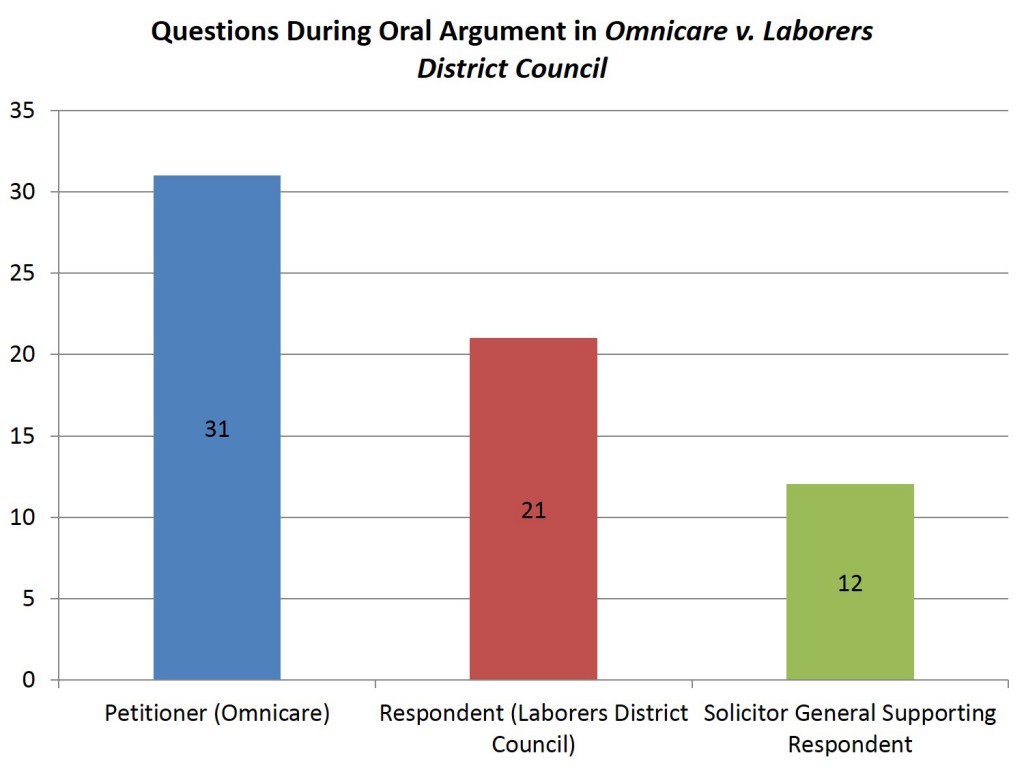In previous posts, I discussed last Term’s oral dissents by Justices Sotomayor (Schuette) and Ginsburg (Hobby Lobby)—all now available on Oyez. I now turn to the other major oral dissent of the Term: Justice Breyer’s in the campaign finance case, McCutcheon v. FEC.
Justice Breyer’s oral dissents are particularly interesting listening, because they put on display a side of the justice we don’t often see. For anyone who has struggled to follow his meandering, professorial hypotheticals during oral argument, or anyone who has nodded off while listening to one of his public lectures, it is refreshing to hear the more direct and passionate Justice Breyer who comes through in his oral dissents. We saw this in his widely noted oral dissent in Parents Involved, the 2007 decision striking down the use of race in public school pupil assignment, and we saw this again last term in his McCutcheon bench dissent. In his ability to connect with an audience, he still falls well behind some of his colleagues—Scalia, Kagan, and Sotomayor, most especially—yet he comes quite a bit closer in these oral dissents.
Breyer’s oral dissent in McCutcheon diverges from his written dissent in two minor but interesting ways. First, he adopts a more colloquial, evocative tone and language to express his frustration with the majority’s reasoning in striking down aggregate limits on campaign contributions. Some of his modifications and additions seem designed to better engage a wider public. He adds a nice line about how the majority has replaced a set limit on aggregate campaign contributions with “a new number: infinity.” And he also adds the following catchy line: “If the Court in Citizens United opened the door, today’s decision, we fear, will open the floodgates.”
Second, in his oral dissent Breyer tones down (just a touch) his attack on the majority. He adds small qualifiers to some of his most accusatory lines. The following line—“Taken together with Citizens United v. Federal Election Comm’n, 558 U. S. 310 (2010), today’s decision eviscerates our Nation’s campaign finance laws, leaving a remnant incapable of dealing with the grave problems of democratic legitimacy that those laws were intended to resolve”—becomes this—“Taken together with Citizens United, today’s holding, we fear, eviscerates our Nation’s campaign finance laws, leaving a remnant incapable of dealing with the grave problems of democratic legitimacy that those laws were intended to resolve.” Also, at one point he throws in a compliment to Chief Justice Roberts, the author of the opinion of the Court, noting that his opinion is a “good opinion—although I don’t agree with it.” We’ve seen this kind of thing before. It’s not easy to launch an attack on an opinion when the author of that opinion is sitting only feet away. This can cause the oral dissenter to pull some punches (as Sotomayor did in her Schuette oral dissent) or, in this case, to go out of the way to emphasize that the critique is not a personal one.






